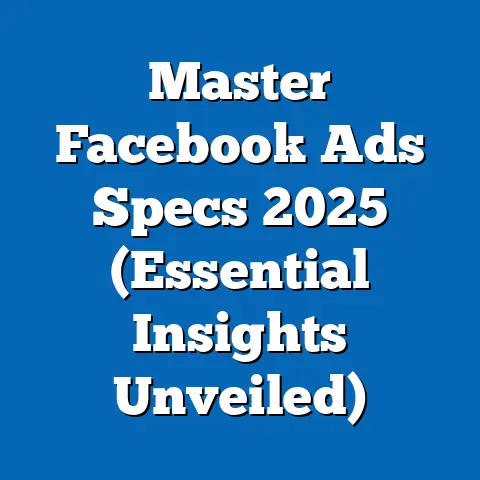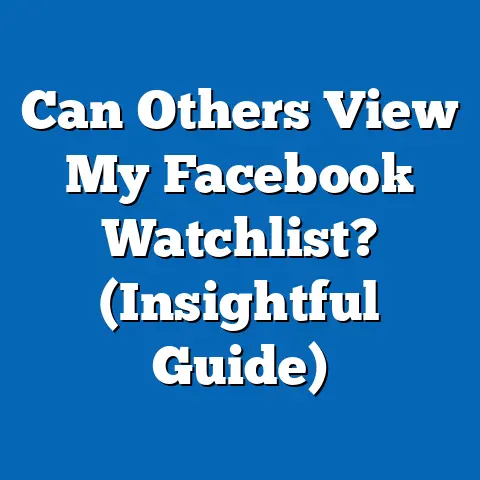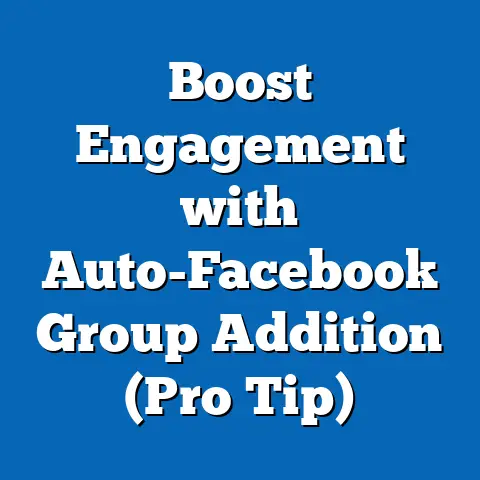Master Client Facebook Ads (Expert Strategies Unveiled)
Mastering Client Facebook Ads: Expert Strategies Unveiled
Facebook advertising is a cornerstone of modern digital marketing, offering unparalleled reach and targeting capabilities. But in a sea of ads, how do you make your client’s campaign stand out? The answer lies in strategic planning, compelling content, and, most importantly, understanding and leveraging seasonal trends. By tapping into these trends, you can significantly boost engagement, conversions, and overall ROI. In this guide, I’ll unveil expert strategies that I’ve personally used to achieve remarkable results for my clients, transforming their Facebook advertising from a cost center to a revenue-generating powerhouse.
Understanding Seasonal Trends
Seasonal trends are recurring patterns in consumer behavior that coincide with specific times of the year. These trends can be driven by holidays (Christmas, Black Friday, Valentine’s Day), seasons (summer, winter), or even cultural events (back-to-school, sporting championships). Understanding these patterns is crucial because they directly influence consumer needs, desires, and purchasing decisions.
Think about it: during the holiday season, people are actively looking for gifts; in the summer, they’re planning vacations and outdoor activities. By aligning your Facebook ad campaigns with these trends, you’re not just showing ads; you’re providing relevant solutions to their immediate needs.
Why is this important? Because consumers are far more likely to engage with ads that resonate with their current mindset. Studies have shown that ads aligned with seasonal events can see a significant increase in click-through rates (CTR) and conversion rates. I’ve personally witnessed campaigns that doubled their conversion rates simply by switching to seasonal messaging.
Example: Imagine you’re selling winter coats. Instead of running generic ads year-round, focus your efforts during the fall and winter months. Tailor your ad copy to highlight the warmth and style of your coats, and use imagery that evokes the feeling of a cozy winter day.
Takeaway: Identifying and understanding seasonal trends is the foundation of a successful Facebook ad strategy. It’s about being relevant and timely, offering the right product or service at the right moment.
Analyzing Your Audience
Crafting effective Facebook ads starts with a deep understanding of your audience. Who are they? What are their interests? What are their pain points? This is where audience research comes in. I can’t stress this enough: never assume you know your audience. Always back your assumptions with data.
Tools and Techniques:
- Facebook Audience Insights: This tool is a goldmine of information. It allows you to analyze demographics, interests, behaviors, and even purchase patterns of your target audience. I use it to understand what pages they like, what activities they engage in, and what devices they use.
- Facebook Ads Manager: Beyond creating ads, Ads Manager provides valuable insights into audience performance. You can see which demographics are most responsive to your ads, which placements generate the most conversions, and which interests are most effective for targeting.
- Third-Party Tools: Tools like Google Analytics, SEMrush, and SimilarWeb can provide additional insights into your audience’s online behavior, website traffic, and competitor analysis.
- Customer Surveys and Feedback: Don’t underestimate the power of direct feedback. Surveys, polls, and customer reviews can provide invaluable qualitative data about your audience’s needs and preferences.
Segmenting Audiences:
Once you’ve gathered your data, segment your audience based on seasonal trends, behaviors, and interests. For example, during the holiday season, you might segment your audience into “gift shoppers,” “party planners,” and “travelers.” Each segment will have different needs and motivations, requiring tailored ad messaging.
Example: Let’s say you’re promoting a travel agency. In the summer, you might target families interested in beach vacations. During the winter holidays, you could target couples looking for romantic getaways. By segmenting your audience and tailoring your ads accordingly, you’ll increase relevance and improve your chances of conversion.
Takeaway: Audience analysis is an ongoing process. Continuously monitor your audience insights and adjust your targeting as needed to stay ahead of the curve.
Crafting Compelling Ad Content
With a solid understanding of seasonal trends and your audience, you can now focus on crafting compelling ad content. This is where creativity meets strategy. Your ad copy and visuals must capture attention, resonate with your audience, and drive action.
Elements of Effective Ad Content:
- Compelling Headlines: Your headline is the first thing people see, so make it count. Use strong verbs, ask questions, and highlight the benefits of your product or service. For seasonal ads, incorporate relevant keywords and themes.
- Persuasive Calls-to-Action (CTAs): Tell people what you want them to do. Use clear and concise CTAs like “Shop Now,” “Learn More,” or “Get Your Discount.” For seasonal campaigns, consider CTAs like “Find the Perfect Gift” or “Book Your Holiday Getaway.”
- High-Quality Visuals: Use eye-catching images or videos that are relevant to your product or service and the seasonal theme. Ensure your visuals are high-resolution and optimized for different placements.
- Clear and Concise Copy: Keep your ad copy short and sweet. Highlight the key benefits of your product or service and address any pain points your audience might have.
- Social Proof: Include testimonials, reviews, or endorsements to build trust and credibility.
Expert Tips:
- Use Emotion: Tap into the emotions associated with the season. For example, during the holidays, evoke feelings of joy, nostalgia, and togetherness.
- Highlight Scarcity and Urgency: Create a sense of FOMO (fear of missing out) by highlighting limited-time offers or limited quantities.
- Personalize Your Ads: Use dynamic creative optimization (DCO) to personalize your ads based on audience demographics, interests, and behaviors.
- A/B Test Everything: Test different headlines, visuals, CTAs, and ad formats to see what resonates best with your audience.
Examples of Successful Seasonal Ad Campaigns:
- Coca-Cola’s Holiday Campaigns: Coca-Cola has mastered the art of seasonal advertising. Their holiday campaigns consistently evoke feelings of warmth, nostalgia, and togetherness, making them instantly recognizable and highly effective.
- Starbucks’ Pumpkin Spice Latte: Starbucks’ annual release of the Pumpkin Spice Latte is a prime example of leveraging seasonal hype. They create a sense of anticipation and excitement around the product, driving massive sales.
- Amazon’s Black Friday Deals: Amazon’s Black Friday campaigns are a masterclass in creating urgency and highlighting discounts. They use countdown timers, limited-time offers, and aggressive pricing to drive conversions.
Takeaway: Crafting compelling ad content is an art and a science. It requires a deep understanding of your audience, a creative flair, and a willingness to experiment.
Strategic Ad Placement and Timing
Choosing the right ad placements and timing is crucial for maximizing the impact of your Facebook ads. You want to ensure your ads are seen by the right people at the right time.
Ad Placements:
Facebook offers a variety of ad placements, including:
- Facebook Feed: This is the most common placement and is ideal for reaching a broad audience.
- Instagram Feed: This placement is ideal for visually appealing products and services.
- Facebook Stories and Instagram Stories: These placements are ideal for short, engaging videos and images.
- Facebook Marketplace: This placement is ideal for local businesses and products.
- Facebook Audience Network: This placement allows you to extend your reach beyond Facebook and Instagram to a network of third-party websites and apps.
Timing:
The timing of your ads can significantly impact their performance. Consider the following:
- Peak Seasons: Focus your efforts during peak seasons when consumer demand is highest.
- Day of the Week: Experiment with different days of the week to see when your audience is most responsive.
- Time of Day: Experiment with different times of day to see when your audience is most active.
Facebook’s Ad Scheduling Features:
Facebook’s ad scheduling features allow you to schedule your ads to run at specific times and days. This is particularly useful for seasonal campaigns, where you might want to focus your efforts during specific periods.
Budgeting Strategies:
Adjust your budget based on seasonal demand. Increase your budget during peak seasons to maximize reach and conversions. Decrease your budget during off-peak seasons to conserve resources.
A/B Testing:
A/B test different ad placements and timings to see what works best for your audience. Use Facebook’s A/B testing feature to compare the performance of different ad variations.
Example: If you’re promoting a back-to-school sale, you might focus your efforts during the weeks leading up to the start of the school year. Run your ads during the evenings and weekends when parents are likely to be browsing online.
Takeaway: Strategic ad placement and timing is about maximizing your reach and impact. Experiment with different options and continuously monitor your performance to optimize your campaigns.
Leveraging Retargeting and Lookalike Audiences
Retargeting and lookalike audiences are powerful tools for maximizing the effectiveness of your Facebook ads, especially during seasonal campaigns.
Retargeting:
Retargeting involves showing ads to people who have previously interacted with your business, such as visiting your website, viewing a product, or adding items to their cart. This is a highly effective way to re-engage potential customers and drive conversions.
How to Use Retargeting for Seasonal Campaigns:
- Target Website Visitors: Show ads to people who have visited your website during the holiday season, reminding them of products they viewed or added to their cart.
- Target Email Subscribers: Upload your email list to Facebook and target your subscribers with seasonal promotions.
- Target Past Customers: Show ads to past customers, encouraging them to make a repeat purchase.
Lookalike Audiences:
Lookalike audiences allow you to target new people who are similar to your existing customers. Facebook uses its vast database to identify users who share similar demographics, interests, and behaviors with your customer base.
How to Create Lookalike Audiences for Seasonal Campaigns:
- Base Your Lookalike Audience on Your Best Customers: Create a lookalike audience based on your highest-spending customers or those who have made multiple purchases.
- Base Your Lookalike Audience on Website Visitors: Create a lookalike audience based on people who have visited your website during the holiday season.
- Base Your Lookalike Audience on Email Subscribers: Create a lookalike audience based on your email subscribers.
Combining Retargeting and Seasonal Promotions:
Combine retargeting with seasonal promotions to drive conversions. For example, show ads to people who abandoned their cart during the holiday season, offering them a discount to complete their purchase.
Example: Imagine someone visits your website and views a specific product but doesn’t make a purchase. A retargeting ad can remind them of that product and offer a special holiday discount, increasing the likelihood of a conversion.
Takeaway: Retargeting and lookalike audiences are essential tools for maximizing your ROI. Use them strategically during seasonal campaigns to re-engage potential customers and reach new audiences.
Measuring and Analyzing Campaign Performance
Measuring and analyzing campaign performance is crucial for understanding what’s working and what’s not. This allows you to make data-driven decisions and optimize your campaigns for better results.
Key Performance Indicators (KPIs):
- Click-Through Rate (CTR): The percentage of people who click on your ad after seeing it.
- Conversion Rate: The percentage of people who take the desired action after clicking on your ad, such as making a purchase or filling out a form.
- Cost Per Click (CPC): The amount you pay each time someone clicks on your ad.
- Cost Per Acquisition (CPA): The amount you pay for each conversion.
- Return on Ad Spend (ROAS): The amount of revenue you generate for every dollar you spend on advertising.
Tools and Techniques:
- Facebook Ads Manager: This tool provides detailed data on your ad performance, including impressions, clicks, conversions, and costs.
- Google Analytics: This tool allows you to track website traffic and conversions generated by your Facebook ads.
- Attribution Modeling: Use attribution modeling to understand how different touchpoints contribute to conversions.
Interpreting Data:
- Identify Trends: Look for patterns in your data. Are certain demographics more responsive to your ads? Are certain placements generating more conversions?
- Compare Performance: Compare your performance to industry benchmarks. Are your CTRs and conversion rates above or below average?
- Identify Areas for Improvement: Look for areas where you can improve your performance. Are your CPAs too high? Are your CTRs too low?
Making Adjustments:
- Optimize Your Targeting: Adjust your targeting based on your data. Focus on demographics, interests, and behaviors that are generating the best results.
- Optimize Your Ad Content: Adjust your ad content based on your data. Test different headlines, visuals, and CTAs to see what resonates best with your audience.
- Optimize Your Budget: Adjust your budget based on your data. Allocate more resources to campaigns that are performing well and less resources to campaigns that are not.
Seasonal Performance Metrics:
Pay special attention to how your campaigns perform during different seasons. This will help you identify seasonal trends and optimize your campaigns for future years.
Example: If you notice that your holiday campaigns consistently generate higher ROAS than your summer campaigns, you might consider allocating more resources to your holiday campaigns in the future.
Takeaway: Measuring and analyzing campaign performance is an ongoing process. Continuously monitor your data and make adjustments as needed to optimize your campaigns for better results.
Conclusion
Mastering client Facebook ads requires a strategic approach that combines a deep understanding of your audience, compelling ad content, strategic ad placement and timing, and continuous measurement and analysis. By leveraging seasonal trends, you can significantly boost engagement, conversions, and overall ROI.
I’ve shared expert strategies that I’ve personally used to achieve remarkable results for my clients. I encourage you to implement these strategies in your own campaigns and see the difference they can make.
The potential of Facebook ads is immense, but it requires a commitment to continuous learning and optimization. By mastering the art of seasonal advertising, you can unlock the full potential of Facebook ads and achieve remarkable results for your clients. So, go out there, experiment, and make some magic happen!






